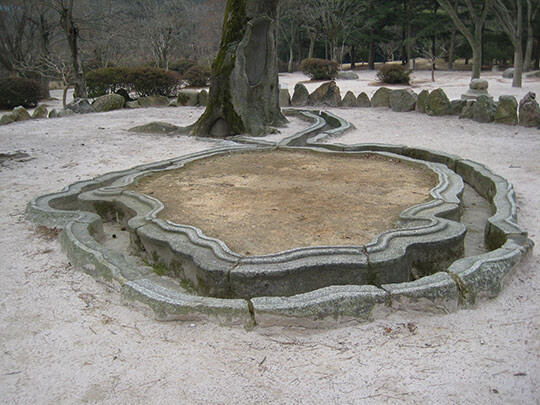
Gyeongju, South Korea — The air in Gyeongju, the ancient capital of the Silla Kingdom, is thick with history, but few places capture the bittersweet essence of a dynasty's arc quite like Poseokjeong. A site of both opulent revelry and tragic decline, Poseokjeong stands as a silent sentinel, its winding stone waterway the last remaining witness to Silla's zenith and eventual demise. While the pavilion that once stood here has long since vanished, the spirit of an era remains, whispered on the wind that rustles through the surrounding trees.
Poseokjeong was reputedly constructed during the reign of King Heongang, a period often hailed as the golden age of Silla. Chronicles from this time paint a picture of a flourishing kingdom, blessed with favorable winds and timely rains. The capital city, Geumseong, was said to be a marvel of urban planning, with a continuous stretch of tiled eaves so extensive that one could traverse the city without ever needing an umbrella. This prosperity set the stage for the lavish gatherings that would take place at Poseokjeong, a place designed for both leisure and intellectual pursuit.
The centerpiece of these gatherings was the Yusanggoksu−yeon, or "flowing wine cup party." This sophisticated game, a practice inspired by the renowned Chinese calligrapher Wang Xizhi, involved a sinuous, abalone-shaped waterway called the Yubaegeo. Participants would seat themselves along the banks of this channel, and a wine cup would be set afloat. As the cup meandered its way downstream, a participant was tasked with composing a poem. Failure to complete a verse before the cup arrived resulted in a humorous penalty: drinking the cup’s contents. This elegant fusion of poetry, drink, and nature reflects the refined cultural sensibilities of Silla's elite, who sought to blend intellectual challenge with the beauty of their surroundings.
The waterway itself is a masterpiece of hydraulic engineering, a testament to the Silla artisans' skill. Despite its modest 22-meter length, the channel's subtle 6-centimeter drop in elevation was meticulously calculated to ensure a gentle, continuous flow of water. The name Poseokjeong itself, meaning "Abalone Stone Pavilion," is a direct nod to the waterway's distinctive, spiraling shape. While the pavilion is gone, the stones of the Yubaegeo endure, a stark and beautiful relic of a bygone era.
Yet, Poseokjeong's legacy is not solely one of triumph and prosperity. The site is indelibly linked with the final, tragic moments of Silla. It was here, in 927 CE, that King Gyeongae was caught unawares by a surprise attack from the Later Baekje forces led by Gyeon Hwon. While the king and his court were engrossed in a banquet, the enemy descended, leading to the king’s capture and subsequent death. This event is often cited as a pivotal moment, a symbolic end to the Silla dynasty's long and storied history. Poseokjeong, the stage for so many celebrations, became the site of its final, fatal misstep.
Today, Poseokjeong is a poignant and popular autumn destination. The vibrant green foliage of summer gives way to a breathtaking panorama of crimson and gold. As the leaves fall, preparing for the stillness of winter, visitors often reflect on the site’s profound historical significance. The seasonal cycle, with its flourish and fade, mirrors the epic narrative of Silla itself—a powerful kingdom that, like the leaves, rose in brilliance, then gracefully, and inevitably, fell.
The site remains a place of quiet contemplation, a place to walk along the ancient waterway and imagine the laughter and poetry of a golden age, and the sudden, chilling silence that followed. Poseokjeong is more than just a historical ruin; it is a monument to the fleeting nature of power and the enduring power of memory, a place where the past is not merely recalled but felt, in every stone and every rustle of the autumn leaves.
[Copyright (c) Global Economic Times. All Rights Reserved.]




























